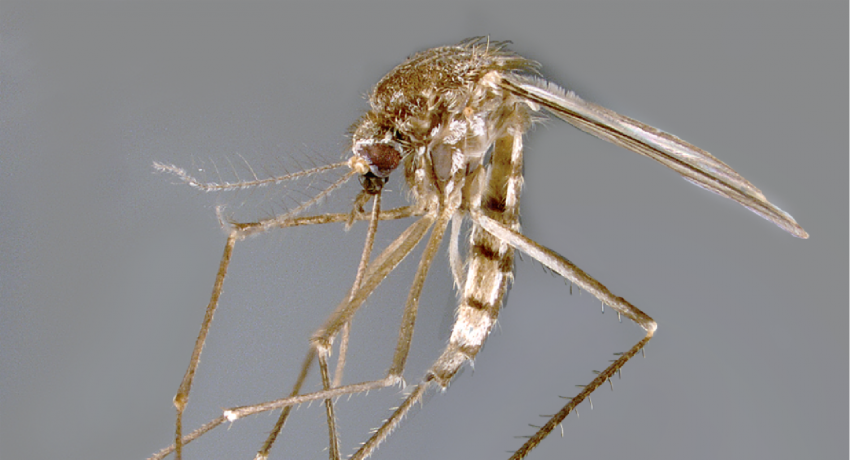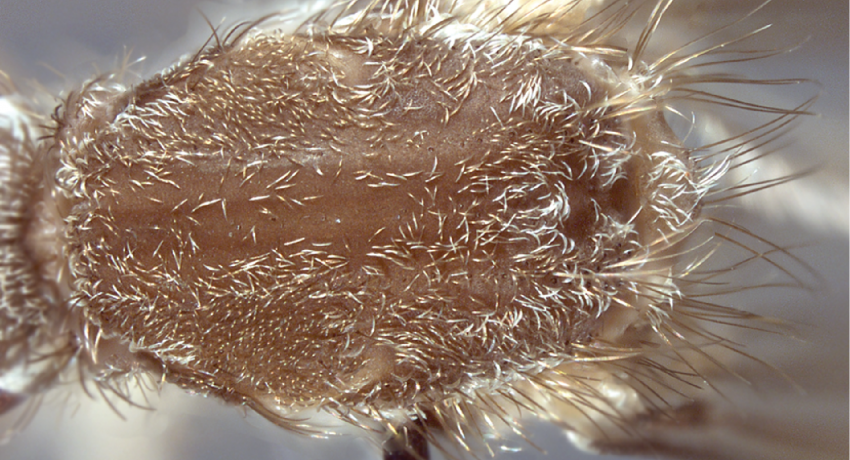AFROTROPICAL REGION
Etymology: Stephenson Lyle Cummin
Aedes cumminsi is widely spread across the African continent, south of the Sahara Desert, and comprises the most common of all five species comprising the Dentatus Group in South Africa. Aedes cumminsi has one valid subspecies—ssp. mediopunctatus (Theobald)—which was originally described from Ashanti in Ghana. This taxon has been placed into synonymy with and reelevated from synonymy with Ae. cumminsi several times, suggesting that further studies are needed to establish its taxonomic status.
Type locality: Bahr-el-Ghazal, Central Africa [South Sudan]
Type depository: Natural History Museum, London, England, United Kingdom (NHMUK)
DIAGNOSTIC CHARACTERS (Click photos to view; mouse over and click large photo to zoom in.)
ADULT (illustrated): Head: Proboscis entirely dark-scaled. Thorax: Scutum indistinctly marked; scutellum with narrow yellow scales. Post- and sub-spiracular scale patches present. Legs: Ti-III with apical yellow spot.
LARVA (not illustrated): Head: Integument spiculate. Terminal abdominal segments: Comb with spine-like comb scales; seta 1-S small, inserted basal to distal-most of c. 14 pecten; pecten spines closely-spaced basally, 3 distal-most widely-spaced; siphon index ≥4; c. 6 precratal setae; tiny chitinous plates on integument of larval thorax and abdomen.
TAXONOMIC KEYS
Jupp 1996
Exemplar DNA sequences
Ae. cumminsi COI: KU187000, KU187000
BIONOMICS
Immatures
The eggs are deposited in floodplain depressions as well as poorly drained depression in grasslands called “dambos”, and larvae have been collected in temporary turbid water poos at the edges of marshes. Rain that floods the site tends to hatch an entire cohort of eggs, so this species occurs in larger numbers after heavy rains, and adults may be absent between flooding events.
Adults
Surprisingly little is known on the biology of Ae. cumminsii. The females feed preferentially on cattle, but also attack man. Like other members of the subgenus, Ae. cumminsii is a floodwater mosquito, depositing its eggs in the soil of depressions above the current water line in anticipation of future flooding.
DISTRIBUTION NOTES
Angola, Benin, Burkina Faso, Cameroon, Central African Republic, Cote d'Ivoire, Democratic Republic of the Congo, Ethiopia, Ghana, Kenya, Liberia, Mali, Mozambique, Nigeria, Senegal, Sierra Leone, South Africa, Sudan & South Sudan, Uganda, Zambia.

WRBU VECTOR HAZARD REPORTS
None; View other WRBU Vector Hazard Reports
Available GIS Models
None
IMPORTANT REFERENCES (full citations below)
Edwards 1941: 193 (M*, F), 398 (P)
Hopkins 1952: 195 (L*)
Pao & Knight 1970a: 115 (L*)
McIntosh 1975: 279 (M*, F, L; distribution)
Jupp 1996 (M*, F*; key)
CURRENT SYNONYMS & SUBSPECIES
syn. fuscopalpalis Theobald
1909b: 18 (M*; Culicada). Type locality: Obuasi, Ashanti, Ghana (NHMUK).
ssp. mesostictus Harbach
2018c: 3 (new name for mediopunctatus Theobald, 1909b not mediopunctatus Theobald, 1905h). Distribution: Ghana, Nigeria. References: Edwards 1941: 193 (M*, F); Haddow et al. 1951: 224 (syn.); White 1975: 306 (elev. from synonymy with cumminsii); White 1980: 125 (as form; emendment from mediopunctatus); Ward 1984b: 233 (mediopunctata Theobald, 1909b, as junior homonym of mediopunctatus Theobald, 1905h; Harbach & Howard 2007: 45 (to subspecies). Etymology: spotted in middle (Gr).
ssp. syn mediopunctata (Theobald)
1909b: 18 (F, Culicada). Type locality: Obuasi, Ashanti, Ghana (NHMUK).
syn. daruensis Evans
1925a: 123 (M*, F; as variety). Type locality: Moa River, Daru, Sierra Leone (NHMUK). References: Edwards 1941: 193 (synonymy).
CITED REFERENCES
Edwards, F.W. (1941). Mosquitoes of the Ethiopian Region. III. Culicine adults and pupae. Bulletin of the British Museum (Natural History) Entomology.
Evans, A.M. (1925a). Notes on Culicidae collected in Sierra Leone, with descriptions of a new species and a new variety. Annals of Tropical Medicine and Parasitology, 19, 119–126.
Haddow, A.J., van Someren, E.C.C., Lumsden, W.H.R., Harper, J.O., & Giilett, J.D. (1951). The mosquitoes of Bwamba County, Uganda. VIII. Records of occurrence, behaviour and habitat. Bulletin of Entomological Research, 42, 207–238.
Harbach, R.E. (2018c). Culicipedia: species-group, genus-group and family-group names in Culicidae (Diptera). Wallingford, Oxfordshire, UK: CABI.
Harbach, R.E., & Howard, T. M. (2007). Corrections in the status and rank of names used to denote varietal forms of mosquitoes (Diptera: Culicidae). Zootaxa, 1542, 35–48.
Hopkins, G.H.E. (1952). Mosquitoes of the Ethiopian region. I. Larval bionomics of mosquitoes and taxonomy of culicine larvae (2nd ed.). London, UK: British Museum (Natural History).
Jupp, P.G. (1996). Mosquitoes of southern Africa. Culicinae and Toxorhynchitinae. Ekogilde Publishers, Hartebeespoort, South Africa 156pp.
McIntosh, B.M. (1975). A taxonomic revision of certain Aedes species (Diptera: Culicidae) of the subgenus Aedimorphus in Southern Africa. Journal of the Entomological Society of Southern Africa, 38(2), 251–287.
Pao, B., & Knight, K.L. (1970a). The fourth instar larval mandible and maxilla of selected Aedes (Aedimorphus) species (Diptera, Culicidae). Mosquito Systematics, 2(3), 98–131.
Theobald, F.V. (1905h). Some new mosquitoes from Ceylon. Journal of Bombay Society, 237–250.
Theobald, F.V. (1909b). Description of the new mosquitoes collected by Dr. Graham in Ashanti. Colonial Office Report, misc Ser 237.
Ward, R.A. (1984b). Second supplement to a catalog of the mosquitoes of the World (Diptera: Culicidae). Mosquito Systematics, 16(3), 227–270.
White, G.B. (1975). Notes on a catalogue of the Ethiopian Region. Mosquito Systematics, 7(4), 303–344.
White, G.B. (1980). Catalogue of the Diptera of the Afrotropical region British Museum (Natural History). In R. W. Crosskey (Ed.), Catalogue of the Diptera of the Afrotropical region British Museum (Natural History) (pp. 114–148). London.
CITE THIS PAGE
Walter Reed Biosystematics Unit (Year). Aedes cumminsii species page. Walter Reed Biosystematics Unit Website, http://wrbu.si.edu/vectorspecies/mosquitoes/cumminsii accessed on [date (e.g. 03 February 2020) when you last viewed the site].











































































































































































